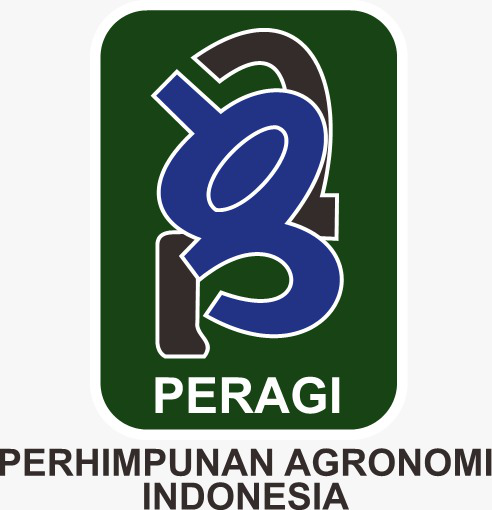Ecoenzyme Potential as Biostimulant against Germination of Shallots of Seed Origin (TSS) (Allium ascalonicum L.)
Abstract
Ecoenzymes are the result of fermentation of organic matter waste such as vegetable waste or abundant fruits such as citrus fruit peels, pineapple peels and banana peels. Some of the functions of ecoenzymes are as a solution for floor cleaning, disinfectants, vegetable and fruit cleaners, pest control, plant pathogen control, and plant fertilizers. True shallot Seed (TSS) is an alternative onion plant material in the form of seeds. The use of onion botanical seeds is one of the potential technology alternatives developed to obtain quality onion seeds. The purpose of the study was to determine the effect of ecoenzyme application as a seed germination booster through seed soaking method using 3 (three) types of ecoenzyme liquid with a solution concentration of 5.0 ml / L water. The results showed that the application of ecoenzymes was able to increase the germination of TSS seeds compared to controls. Ecoenzymes from orange peels produce the highest percentage of germination compared to ecoenzymes from banana peels and pineapple peels.Downloads
References
Agustin, S., & Wahyuningrum, M. A. (2019). Pengaruh konsentrasi poc limbah kulit jeruk peras terhadap pertumbuhan dan produksi tanaman sawi hijau ( Brassica Juncia L .). Jurnal Ilmiah Respati, 10(2), 136–145. https://ejournal.urindo.ac.id/index.php/pertanian/article/view/655/542
Atman. (2021). Teknologi budidaya bawang merah asal biji (Shallot Cultivation Technology from True Shallot Seed). Jurnal Sains Agro, 6(1), 11–21. https://ojs.umb-bungo.ac.id/index.php/saingro/article/view/497
Basuki, R. S. (2009). Analisis Kelayakan Teknis dan Ekonomis Teknologi Budidaya Bawang Merah dengan Benih Biji Botani dan Benih Umbi Tradisional. Jurnal Hortikultura, 19(2), 214–227. https://media.neliti.com/media/publications/84077-none-4d116913.pdf
BPS. (2020). Statistika Indonesia (luas Panen dan Produksi Bawang Merah 2018-2020). https://jateng.bps.go.id/indicator/55/727/1/luas-panen-dan-produksi-bawang-merah.html
Dondo, Y., Sondakh, T. D., & Nangoi, R. (2023). The Effectiveness of Using Ecoenzymes Based on Several Kinds of Fruit on the Growth of Lettuce (Lactuca sativa L.). Jurnal Agroekoteknologi Terapan, 4(1), 147–158. https://doi.org/10.35791/jat.v4i1.46243
Hemalatha, M., & Visantini, P. (2020). Potential use of eco-enzyme for the treatment of metal based effluent. IOP Conference Series: Materials Science and Engineering, 716(1). https://doi.org/10.1088/1757-899X/716/1/012016
Lubis, N., Wasito, M., Marlina, L., Ananda, S. T., & Wahyudi, H. (2022). Potensi ekoenzim dari limbah organik untuk meningkatkan produktivitas tanaman. Seminar Nasional UNIBA Surakarta, 182–188. http://journal.uniba.ac.id/index.php/PSD/article/view/355
Muvea, A. M., Subramanian, S., Maniania, N. K., Poehling, H., Ekesi, S., & Meyhöfer, R. (2018). Endophytic Colonization of Onions Induces Resistance Against Viruliferous Thrips and Virus Replication. 9(December), 1–9. https://doi.org/10.3389/fpls.2018.01785
Nazim, F., & Meera, V. (2021). Treatment of Synthetic Greywater Using 5 % and 10 % Garbage Enzyme Solution. December 2013. https://doi.org/10.9756/BIJIEMS.4733
Rasit, N., & Mohammad, F. S. (2018). production and characterization of bio catalytic enzyme produced from fermentation of fruit and vegetable wastes and its influence. MATTER: International Journal of Science and Technology, 4(2), 12–26. https://grdspublishing.org/index.php/matter/article/view/1641
Salsabila, R. K., & Winarsih, R. (2023). Efektivitas Pemberian Ekoenzim Kulit Buah sebagai Pupuk Organik Cair terhadap Pertumbuhan Tanaman Sawi Pakcoy (Brassica rapa L.). Jurnal LenteraBio, 3(2), 34–40. https://journal.unesa.ac.id/index.php/lenterabio/article/view/17456
Sopha, G. A., Sumarni, N., Setiawati, W., & Suwandi, S. (2016). Teknik Penyemaian Benih True Shallot Seed untuk Produksi Bibit dan Umbi Mini Bawang Merah. Jurnal Hortikultura, 25(4), 318. https://doi.org/10.21082/jhort.v25n4.2015.p318-330
Sumarni, N., Sopha, G. A., & Gaswanto, R. (2012). Respons Tanaman Bawang Merah Asal Biji True Shallot Seeds terhadap Kerapatan Tanaman pada Musim Hujan. Jurnal Hortikultura, 22(1), 23. https://doi.org/10.21082/jhort.v22n1.2012.p23-28
Susilowati, L. E., Shum, M. M., & Arifin, Z. (2021). Pembelajaran Tentang Pemanfaatan Sampah Organik Rumah Tangga Sebagai Bahan Baku Eko-Enzim. Jurnal Pengabdian Magister Pendidikan IPA, 4(4), 356–362. http://download.garuda.kemdikbud.go.id/article.php?article=2475410&val=13782&title=Pembelajaran Tentang Pemanfaatan Sampah Organik Rumah Tangga Sebagai Bahan Baku Eko-Enzim
Tang, F. E., & Tong, C. W. (2011). A Study of the Garbage Enzyme ’ s Effects in Domestic Wastewater. Journal of Environmental and Ecological Engineering, 5(12), 1143–1148. http://www.enzymesos.com/wp-content/uploads/2018/09/Garbage-Enzyme-University-Sarawak.pdf
Tong. (n.d.). Test research of different material made garbage enzyme ’ s effect to soil total nitrogen and organic matter Test research of different material made garbage enzyme ’ s effect to soil total nitrogen and organic matter. https://doi.org/10.1088/1755-1315/510/4/042015
Yudi, S. (2023). Response of Eco Enzyme and Rhizobium Isolation. The International Conference on Education, Social, Sciences and Technology (ICESST), 2(1), 1–14. https://ijconf.org/index.php/icesst/article/view/256
Copyright (c) 2024 Kuswardani, RA, Yusniwati Yusniwati, Magdalena Saragih, Abdul Rahman, Husin Bahri, Agustinus Agustinus

This work is licensed under a Creative Commons Attribution 4.0 International License.
Authors who publish with Jurnal Agronomi Tanaman Tropika (JUATIKA) agree to the following terms:
Authors retain copyright and grant the Jurnal Agronomi Tanaman Tropika (JUATIKA) right of first publication with the work simultaneously licensed under a Creative Commons Attribution License (CC BY 4.0) that allows others to share (copy and redistribute the material in any medium or format) and adapt (remix, transform, and build upon the material for any purpose, even commercially) with an acknowledgment of the work's authorship and initial publication in Jurnal Agronomi Tanaman Tropika (JUATIKA).
Authors are able to enter into separate, additional contractual arrangements for the non-exclusive distribution of the journal's published version of the work (e.g., post it to an institutional repository or publish it in a book), with an acknowledgment of its initial publication in Jurnal Agronomi Tanaman Tropika (JUATIKA). Authors are permitted and encouraged to post their work online (e.g., in institutional repositories or on their website) prior to and during the submission process, as it can lead to productive exchanges, as well as earlier and greater citation of published work.







 More Information
More Information



